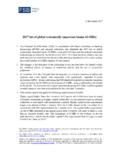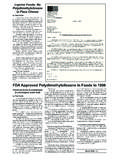Transcription of Corporate Valuations - update 11-07-07 - celeritymoment.com
1 Lecture Series 6 - 11 Corporate Valuations in the Hospitality Business 4th Edition Prof. Chris Droussiotis, , Fairleigh Dickinson University International School of Hospitality Management 2 Corporate Valuations Corporate Valuations OVERVIEW The Importance of Corporate Valuations : The most important objective of management is to increase the value of the company. Many different constituencies are interested in shareholder value. Shareholders Employees Management Future Investors Future Acquirers Creditors (Banks, Subordinated Debt Holders, Trade Creditors) The Community How do you Measure Corporate valuation ?
2 The measurement of value will change depending on the method used to evaluate a particular company balance sheet value today, historical earnings from yesterday, or future earnings from tomorrow. The objective of every measurement, however, remains the same WHAT IS VALUE OF THE FIRM TODAY? 3 Different Measurements of valuation There are number of ways to value a company. These will differ in their appropriateness depending on who is interested in the valuation . These approaches include: Net Book Value Liquidation Value Replacement Value Market Value Net Book Value The main features, of net book value, include: Net book value equals the total equity shown on the balance sheet derived from total assets minus total liabilities.
3 It reflects total issued equity adjusted for the effect of historical retained earnings, divided payments, and repurchase of stock. It is based on accounting conventions generally accepted accounting principals (GAAP) which reflect the valuation of individual groups of assets, and, more influentially over time, the measurement of retained earnings derived from recording of individual revenues and expenses from income statement. The main advantages and disadvantages of net book value as an analytical measurement is: Net book value is a historical accounting measurement, reflecting all of the weakness endemic in accrual accounting as a measurement of historical cash flows.
4 Further, it does not measure the impact of value future cash flows. Net book value is nevertheless used extensively as a measurement of valuation . For example, certain types of companies are valued and analyzed by comparing market value to book value ( banks and other financial institutions). This reflects the importance, which the market places on underlying value (primarily liquidation value) of the assets of the firm. Net book value, sometimes referred to as net worth or equity, is also an important measurement since it is the basis for most loan agreement financial covenants, and provides lenders with the requisite trigger in their agreements in the event of deterioration in book value below a certain point.
5 For lenders, therefore, net book value is an important measurement of value. Liquidation Value Financial institutions such as the banks, creditors, mainly are interested in the Liquidation Value of the hotel or restaurant property. It has the following principal characteristics: 4 Liquidation value can be defined in a number of settings including orderly liquidation on-site, forced liquidation on-site, orderly liquidation off-site, and forced liquidation off-site. Liquidation values will include, in addition to the expected proceeds of the assets themselves, the cost of selling the assets.
6 As a result the on-site/off-site issue is very important , and will be reflected in Valuations given by valuation experts. In coming up with such liquidation values, valuation experts will use a highly professional, comparative approach, which reflects sales of similar assets in similar locations. This approach is used frequently by asset-based lenders where the uncertainty or volatility of projected cash flows demands a detailed understanding of backdoor sources or repayment most important the assets themselves the sale of the building.
7 Lenders will also implicitly include liquidation values in lending criteria through the conservatism of advance rates against individual sets of assets ( 75% against eligible receivables, 50% against eligible inventory, or 50% against eligible PP&E). For the shareholder, this valuation approach has limited benefits in maximizing potential shareholder value (unless, of course, the company is already in distress). The approach involves a discounting of book values- and is therefore even more conservative than the net book value approach and does not reflect any future cash flows discounted back to present value today.
8 Replacement Value Replacement value is exactly what it says: the amount a potential acquirer would have to pay to replace the assets at today s market prices. Though rarely used for hotel assets, it has the following characteristics: It is most commonly applied when valuing an entire business process or system compared to just individual assets. It includes not just the original cost, but also the soft costs of engineering, installation, maintenance, and add-ons. It will also reflect the benefits of marketing and distribution arrangements with other parts of the business.
9 It is rarely used as a stand alone valuation technique, but more usually in conjunction with earnings multiples in order to derive a median price It is particularly pertinent for long-term sale/leaseback transactions where the lessor values assets for the purposes of determining his/her effective economic life in conjunction with his/her cash flow generating ability. As a result, replacement value will almost always yield a higher valuation for a firm or a business than that of either net book value or liquidation value.
10 Bankers rarely use it unless they are participating in both the equity and debt components of a leveraged lease of existing system assets. 5 Market Value Market Value has the advantage over other methods we have seen because it starts to reflect not just historical earnings, but future earnings discounted back to value today. Many factors contribute to the market value of a hotel and restaurant and different types of buyers may use different formulas for determining the price they are willing to pay for a hotel or a restaurant property.




